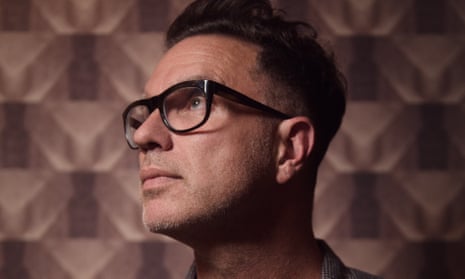In spring this year, dance music collective Powerdance released their third single, A Safe and Happy Place. It came accompanied by a video shot at the Bethnal Green strip club that hosts Savage, an LGBT+ club night “combining disco music with an army of pole-dancing drag queens” at which Luke Solomon – the core of Powerdance, alongside Chicago-born, German-based producer Nick Maurer – is among the resident DJs. The video features the club’s regulars turning themselves into androgynous creatures of the night, a riot of stiletto heels, leather, sequins, thongs, gold teeth grills and, perhaps more unexpectedly, Jacobean ruffs. The images fit perfectly with the track. Its soft, understated sound, occupying an area somewhere between disco and early Chicago house, seems to capture a sense of anticipation about the coming night; its lyrics hymn clubs as a place of transformation and abandon, where the outside world is barred: “Don’t be afraid to let it go … unless it’s love nobody cares … disco has made this place for us.”
It’s a theme that’s been taken up in countless tracks aimed at dancefloors over the last 50 years, but, as with the music it’s set to, A Safe and Happy Place presents it with what you might term a modern twist. The ideal dancefloor, suggest the lyrics, is a place where “nobody stares”, a line that seems to gently suggest that that you can’t really escape into unselfconscious abandon if there’s someone nearby with their phone out, snapping away and posting the results on social media, searching for likes; that it’s hard to shut out the outside world if people insist on bringing the outside world with them in their pockets.
It’s a theme that runs quietly through The Lost Art of Getting Down, from its title onwards: the feeling that, in a world of dance music where the cult of personality appears to have run rampant – where latterday superstar DJs make their 90s British counterparts look like the living embodiment of shy charm and self-deprecating reticence, where you can’t move for Instagram posts of them doing heart hands in front of the dry ice jets – some important, fundamental stuff might have been mislaid. Such as dance music’s LGBTQ roots, for example, and the sense that this is a world where the standard rules of pop music are turned on their head, where what’s happening on the dancefloor is more important than what happens in the DJ booth, where the crowd are the stars and provide the glamour and excitement, and the people behind the music are oddly anonymous figures.
If this all feels perilously close to a stern lecture on paper, The Lost Art of Getting Down never sounds like one. Featuring a vast supporting cast that takes in Hot Chip and LCD Soundsystem’s Al Doyle, jazz trumpeter James Duncan and vocalist and self-styled “banjee child who loves to twirl and dip” Shaun J Wright, it spins gleefully, propulsively, from disco to house to George Clinton-esque funk to the early 80s New York post-punk dance music ZE Records specialised in. Its tracks are further decorated with Afrobeat horns, the kind of blank-eyed sprechgesang vocals found on old Tom Tom Club or Waitresses tracks, blasts of free-blowing jazz sax and spoken-word depictions of psychedelic experiences that sound like one of those curious late-60s LSD exploitation albums by way of RuPaul’s Drag Race. It’s music that ranges from the surprisingly poppy (Brain Gun) to the determinedly off-kilter (Shake Me), that’s aimed squarely at clubs but is still deep and varied enough to reward listening at home. It is an album, rather than a collection of tracks, in which you can, as the title track repeatedly urges, lose yourself. It arrives packed with beautiful, understated touches: the gorgeous, hypnotic string coda to Muscle Groove; the complex, jazzy brass arrangement of Dance Electric; the delicate, muted guitar line that pans from speaker to speaker during Fantasy Light; the way that, in its final minute, A Safe and Happy Place is unexpectedly consumed by growling acid house.
For all it keeps glancing at dance music’s history, from David Mancuso’s Loft to the downtown New York clubs of the early 80s to the raves of the second summer of love, The Lost Art of Getting Down never feels retro. There’s a bass-heavy toughness to the production that makes it sound very much like music made in 2017, rather than 1977 or 1988. Smart and funny without being cynical, varied but coherent, experimental without losing sight of the dancefloor, euphoric but subtle, it offers an object lesson in how to take inspiration from the past and apply it to the present.

Comments (…)
Sign in or create your Guardian account to join the discussion